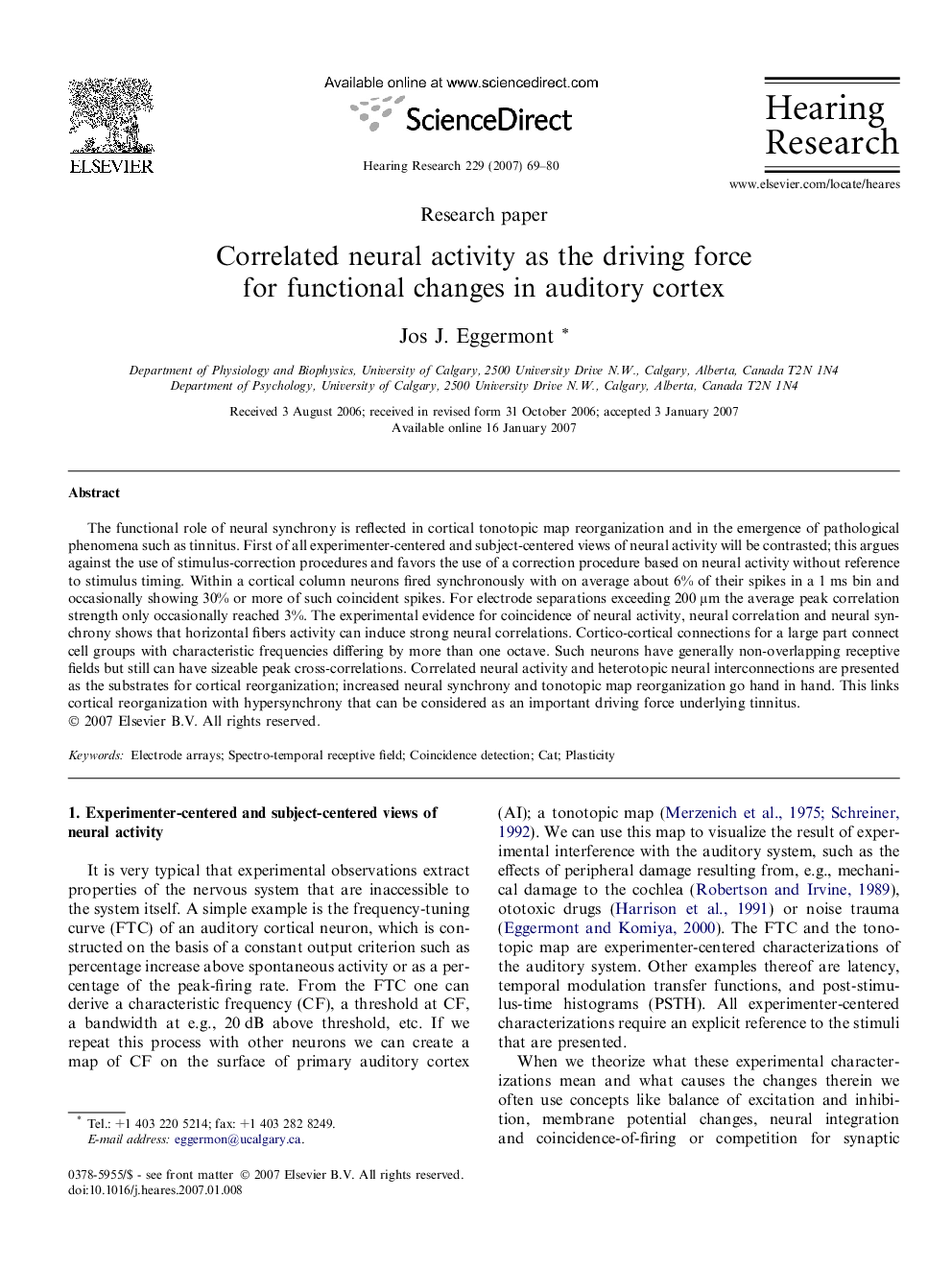| Article ID | Journal | Published Year | Pages | File Type |
|---|---|---|---|---|
| 4356263 | Hearing Research | 2007 | 12 Pages |
Abstract
The functional role of neural synchrony is reflected in cortical tonotopic map reorganization and in the emergence of pathological phenomena such as tinnitus. First of all experimenter-centered and subject-centered views of neural activity will be contrasted; this argues against the use of stimulus-correction procedures and favors the use of a correction procedure based on neural activity without reference to stimulus timing. Within a cortical column neurons fired synchronously with on average about 6% of their spikes in a 1 ms bin and occasionally showing 30% or more of such coincident spikes. For electrode separations exceeding 200 μm the average peak correlation strength only occasionally reached 3%. The experimental evidence for coincidence of neural activity, neural correlation and neural synchrony shows that horizontal fibers activity can induce strong neural correlations. Cortico-cortical connections for a large part connect cell groups with characteristic frequencies differing by more than one octave. Such neurons have generally non-overlapping receptive fields but still can have sizeable peak cross-correlations. Correlated neural activity and heterotopic neural interconnections are presented as the substrates for cortical reorganization; increased neural synchrony and tonotopic map reorganization go hand in hand. This links cortical reorganization with hypersynchrony that can be considered as an important driving force underlying tinnitus.
Related Topics
Life Sciences
Neuroscience
Sensory Systems
Authors
Jos J. Eggermont,
